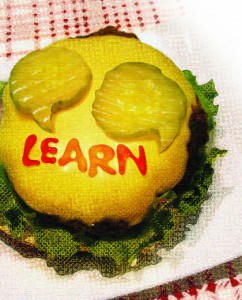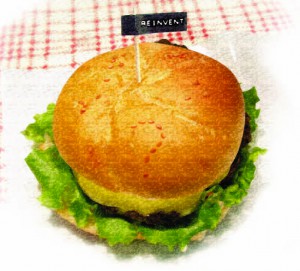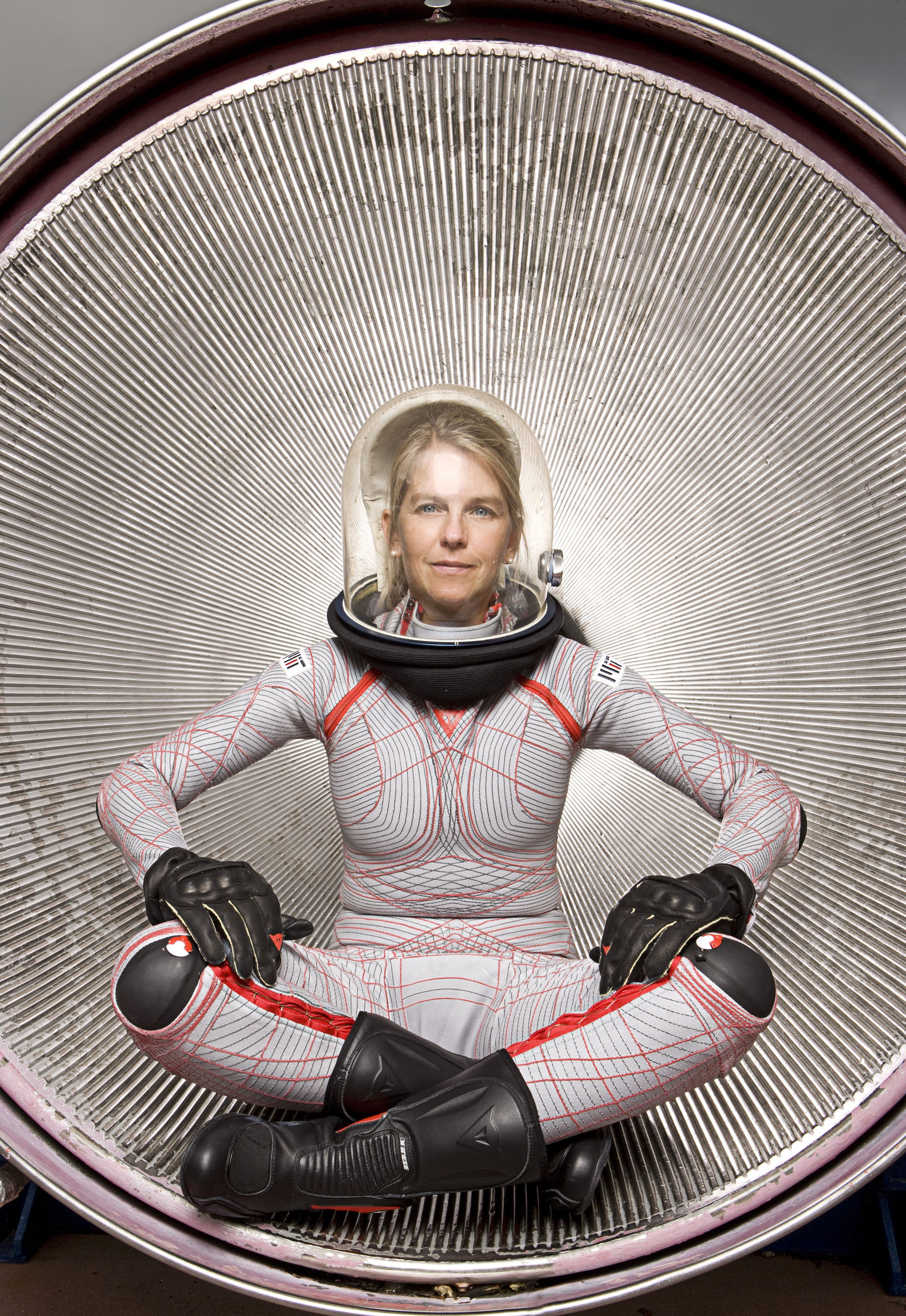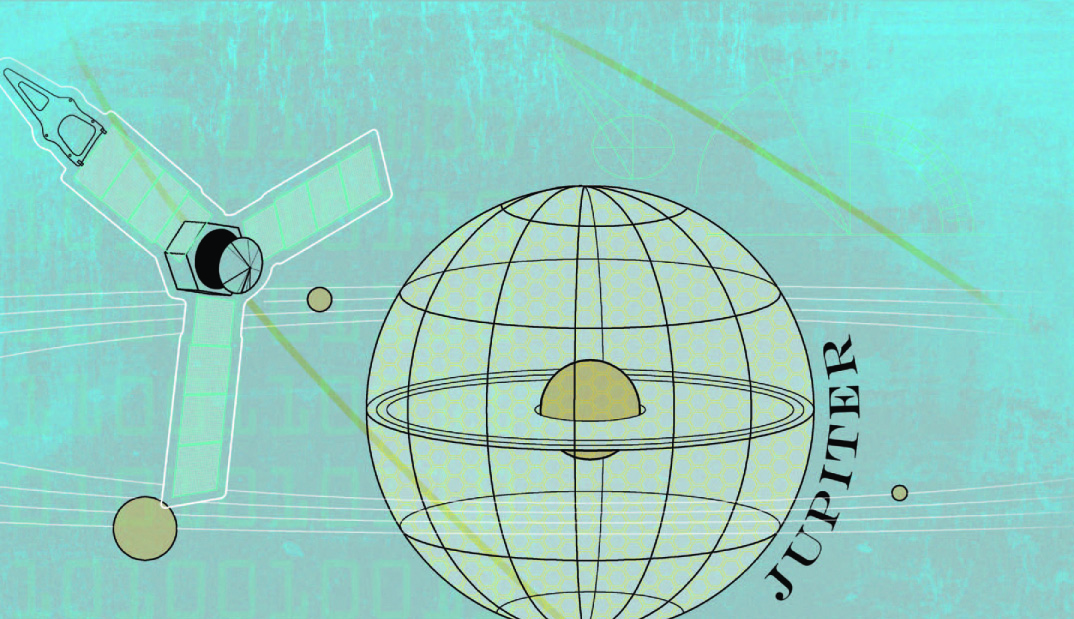
By Maureen Madden
I love to learn about all the cool things we work on here at NASA, but I don’t have time to read all the press releases or go to all the workshops and conferences.  So in 2005, I started my public service activity of taking coworkers out to lunch. I am a senior systems engineer who has worked on everything from particle detectors that study the sun to ground systems that will capture data from weather satellites. When I am working on a project, I see the same group of coworkers, and we talk about our project. I feel that I am missing out on what other projects are doing. The lunches help me catch up with old colleagues and get energized by their passion for their projects.
So in 2005, I started my public service activity of taking coworkers out to lunch. I am a senior systems engineer who has worked on everything from particle detectors that study the sun to ground systems that will capture data from weather satellites. When I am working on a project, I see the same group of coworkers, and we talk about our project. I feel that I am missing out on what other projects are doing. The lunches help me catch up with old colleagues and get energized by their passion for their projects.
Listening to colleagues’ success stories is a great way to learn from and build on what worked for them. Why reinvent a solution to a problem when you can improve or adapt what someone else has already discovered? No one at NASA knows all there is to know about everything.
I am one of the rare extroverts at Goddard Space Flight Center, and I have no problem inviting scientists, engineers, technicians, attorneys, managers, and directors out of the office for a friendly lunch. What I like about the lunches is that I learn something new at every event, as does the person I invite. They also appreciate my effort to get them out of their routines and their offices. It is like giving them a gift. Over the past six years I have taken hundreds of coworkers to lunch—Dutch treat, of course. This year I decided to step up my lunches by bringing my network of friends from around Goddard together to share their success stories with others who may need their knowledge, or who might hear about a solution to a problem that can be adapted to another challenge in another part of the organization to make improvements.
It is not hard to locate an open conference room and send out an e-mail to my friends inviting them to talk about what is working here at Goddard. I hold the lunches monthly and rotate the days of the week so that no one will be left out because they have a standing meeting at lunchtime on a particular day. Then I collect the RSVPs and see who is free to meet this month. The turnouts have been a diverse group of about ten to twenty people from most of the organizations on center.
When firsthand knowledge and experiences are exchanged in story form, we connect to that expertise on an emotional level. Also, we can immediately ask questions to get a better understanding of the situations and actions taken. And we connect with the storytellers, building relationships that expand our network of subject-matter experts.
Everyone needs a break to improve his or her productivity. These monthly lunches offer a break from routine, from the back-to-back meetings, endless e-mail, and quick lunches in the office. Everyone is welcome, whether or not they have a story to tell. Sometimes people just want to listen and learn from others; sometimes they dont have a new success story they are ready to share. Thats okay. Just by coming, people see a positive outcome and have new energy to take back to their offices.
 Stories have included a variety of topics: How did you find the funding for that needed test? How did you promote your employee? Why are your meetings so productive? How did you solve that high-priority issue? How did your team solve that anomaly? How did you develop trust with Headquarters or your contractor? How did you solve that technical challenge or develop that new technology? How did you move that plan to implementation? How did you move the funding around so fast? How did you win that proposal or secure that contract? How did you save the project money? How did you support a colleagues success? How do you get through all your e-mail?
Stories have included a variety of topics: How did you find the funding for that needed test? How did you promote your employee? Why are your meetings so productive? How did you solve that high-priority issue? How did your team solve that anomaly? How did you develop trust with Headquarters or your contractor? How did you solve that technical challenge or develop that new technology? How did you move that plan to implementation? How did you move the funding around so fast? How did you win that proposal or secure that contract? How did you save the project money? How did you support a colleagues success? How do you get through all your e-mail?
Participants have offered stories on turning a “no” into a “yes,” solving an impossible problem, turning an almost cancellation into a success story, and having a successful promotion. There are also stories about how two diverse proposal teams affected morale and motivation, creative and collaborative ways to present at a project monthly review, and how the Information Technology (IT) and Communications Directorate can help in ways we didn’t know about.
The successful promotion story was about getting the facts right and resolving misunderstandings. A couple of listeners were also advocating for a promotion but didn’t understand the process or requirements. This story helped answer some of their questions and encouraged them to have conversations with their supervisors to get to an understanding about their particular requirements.
Eric Newman, from the Management Operation Directorate, shared a story about fixing an “impossible” problem. In procurement, where Eric works, everyone uses the same web site to research past procurement precedents before they develop new procurement documents. Over time, the procurement policy page had grown larger and larger; there was never really a “master plan” for its layout and development. The result was a page that was inefficient and not user friendly. The user had to know where things were or had to look through long lists of information, often in multiple places. This process was extremely inefficient and caused important guidance to be overlooked because it was so hard to sift through all the information to find what was relevant. Everyone knew this was a major problem, but no one had the time or knowledge needed to redesign such a complicated search tool.
Eric stepped up and started to gather a team of friends and coworkers who he thought understood the details of the problem, had ideas to make improvements, and were motivated to get to a solution. It took a lot of effort just to get everyone to meetings but, once they saw that success was possible, people became committed to the project. He also used his network to find an IT person who could work on the web site. He found out that procurement fell within the centers overhead budget and specific funds would not need to be found to cover the cost of the Information Technology and Communications Directorate to provide a web designer.
 The response to the new web site has been overwhelmingly positive. Since it went live, Eric has received numerous phone calls from coworkers who were excited about how quickly and easily they were able to find what they needed. The web-site redesign team recently won an award for innovation. The award write-up said, “The results of this work benefit an entire operational community who use this information daily to award and administer contract instruments. We couldn’t be more excited about the new look and feel. It is user friendly and will save contract specialists time and energy in finding the information that they need.” So, thanks to leadership, persistence, and networking, this team developed an efficient new user-friendly tool that benefits the whole office and entire center. A lunch participant who heard Eric’s story also needed a new web site but did not have the funds. His story moved her to contact the Information Technology and Communications Directorate to see if they could help.
The response to the new web site has been overwhelmingly positive. Since it went live, Eric has received numerous phone calls from coworkers who were excited about how quickly and easily they were able to find what they needed. The web-site redesign team recently won an award for innovation. The award write-up said, “The results of this work benefit an entire operational community who use this information daily to award and administer contract instruments. We couldn’t be more excited about the new look and feel. It is user friendly and will save contract specialists time and energy in finding the information that they need.” So, thanks to leadership, persistence, and networking, this team developed an efficient new user-friendly tool that benefits the whole office and entire center. A lunch participant who heard Eric’s story also needed a new web site but did not have the funds. His story moved her to contact the Information Technology and Communications Directorate to see if they could help.
You don’t know what you don’t know, and you never know what may be useful. At the lunches, people hear about creative new ways of solving old problems. We learn from and support each other at no cost for the knowledge transfer. That is why I have named the lunch group the “Collaborative Collective.” The group is stimulating innovation by creating a culture more open to change and willing to leave behind old habits that no longer serve us, like eating in our offices instead of talking to each other over lunch.
Even this article is an example of how the Collaborative Collective works. Steve Scott, the Goddard chief engineer, suggested at one of our lunches that I write it. Now maybe reading it has given you ideas about a new way to share your knowledge. What success story do you have? Who can benefit from hearing it and help move NASA forward?
About the Author
 |
Maureen Madden began her career at Goddard Space Flight Center in 1990 in the High Energy Astrophysics Lab as the solid-state detector lead. In 2001 she served as the Small Explorers mission director and is currently a senior systems engineer supporting the Joint Polar Satellite System Ground Segment project. |








